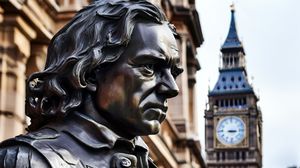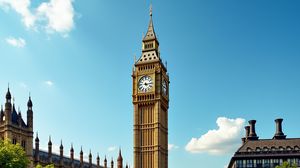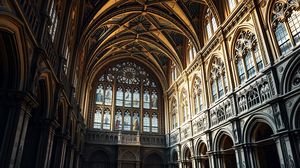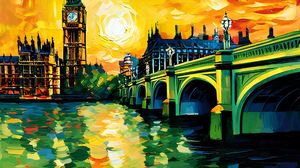
The David Lloyd George Statue in London pays homage to one of the most significant British statesmen of the 20th century. Located near the Houses of Parliament, the statue captures Lloyd George in a dynamic pose, symbolizing his influential and often tumultuous political career. Born in 1863, Lloyd George served as the Prime Minister of the United Kingdom from 1916 to 1922 and was a key figure in leading the country through the latter part of World War I and the subsequent peace negotiations.
One of the intriguing aspects of the statue is its artistic design by Welsh sculptor Glynn Williams, which reflects Lloyd George's energetic and controversial personality. The statue stands among an array of other important figures in British history, elevating its historical significance. Unveiled in 2007, the statue has quickly become a notable point of interest for those intrigued by modern British history and politics.
Lloyd George was a unique figure in British politics, known for his oratory skills and sharp wit. He was the last Liberal to serve as Prime Minister, and his policies laid the foundation for many modern welfare state principles. The statue captures Lloyd George's distinctive attire and flair, with his hand outstretched as though addressing a crowd, capturing his lively approach to leadership.
A fun fact about Lloyd George is his reputation as the ‘Welsh Wizard,' owing to his ability to navigate complex political situations with apparent ease. His background as the son of a school teacher from a modest village in Wales makes his rise to such high political standing even more remarkable. The statue serves as a reminder of his humble beginnings and dynamic life.
In addition to his political legacy, Lloyd George was a fierce advocate for social reform, including pensions for the elderly and workers' rights. The statue's presence near Westminster symbolizes his enduring commitment to bettering the British social landscape. Visiting the statue offers not just a glimpse into the man behind the policies, but it also connects visitors to a pivotal era in British history.

Making the Most of Your Visit:
Start your visit by taking a moment to appreciate the surrounding area. The statue is located in close proximity to the Houses of Parliament, and you'll find it's part of a rich tapestry of historical landmarks. This puts Lloyd George's achievements and era into context, making for a richer experience.
Although it might seem straightforward, pay close attention to the expression and posture of Lloyd George's statue. The artist, Glynn Williams, has captured his dynamic and somewhat controversial nature beautifully. Examining the details can give insight into his character and personality.
Bring along a small notebook or take notes on your phone. As you stand near the statue, jot down any thoughts or reflections related to Lloyd George's influence on social reforms like pensions and workers' rights. It makes for a more interactive experience, connecting you to the statesman's legacy through personal engagement.
Look for the interesting details in his attire. The statue's depiction is quite unique and deliberate, down to the characteristic clothing and the outstretched hand. These details reflect Lloyd George's style and flair, adding an extra layer of appreciation to your visit.
If you're visiting during less busy times, perhaps in the early morning or late evening, you'll often find the area more peaceful, allowing for quiet contemplation. This can be particularly meaningful if you're reflecting on Lloyd George's impact during World War I and the subsequent reforms he championed.

Visiting Times & Costs:
The David Lloyd George Statue near the Houses of Parliament is open to the public all year round and there is no charge to visit as it is an outdoor public monument. Visitors can enjoy the statue and its surroundings without any entrance fee.
Opening Hours:
- Open access all year round, with no specific opening or closing times.
Cost:
- No charge for visiting the statue. It is located in a public space.
Accessibility:
- The area around the statue is generally accessible to those with mobility impairments, but as it is part of a public space, it is recommended to check local conditions or arrangements for any specific accessibility needs.

Address & Map:

Nearby:























